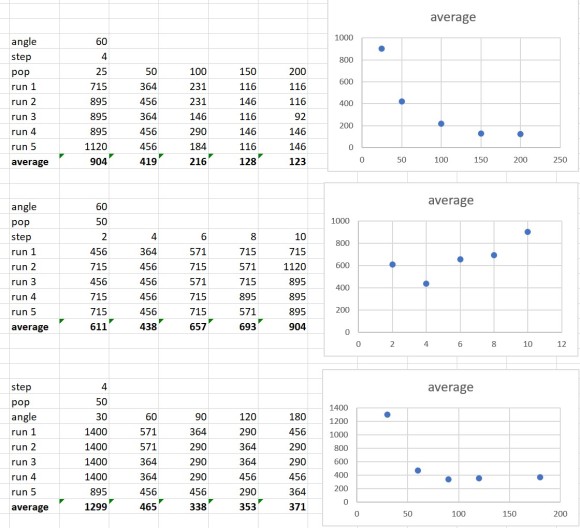After first module there is a homework with 3 challenges going from basic, through intermediate to advance.
The first one is simple, it aims to get acquaintance with the language, I think. The challenge is to change the parameters and see how they affect the total time that ants expend gathering all food. Also, they ask for change the color of ants based on the amount of food they ate.
This first challenge is interesting because shows how these variables relates each other in a nor-linear fashion:

The intermediate challenge is about changing the behavior of ants so once they found food then they return to their nest (the center of the map). Honestly, I didn’t make this last two challenges because I didn’t want to expend time understanding the idiosyncrasy of the language, so I try to figurate how the solution could be and then I went directly to the videos explaining the real solution.
This second part doesn’t add to much besides making the simulation more realistic and showing how to implement that behavior in Netlogo which uses a functional style of programming.
The last part is more interesting. In this part they ask to implement a “pheromone mechanism” and test if this improves the performance of the colony, which indeed does. The implementation in the language is very clever using much less instructions than I thought.
But the great thing is to see how information is used by the agents (the ants) to improve their performance by cooperating between them. Using just this simple mechanism of communication improves a lot their performance as a whole colony.
My point is that information, collaboration and simplicity regarding the processing of such information by individuals to take decision is much more important than the team structure to improve global performance.
I will continue exploring module two next week.